New products for new markets: an interview with John Butterworth
In this second blog of the series, our Head of Infrastructure Products, John Butterworth discusses opportunities in the rail industry and the innovation behind the new Gripple SwiftLine Rail Dropper.
Where did the original idea for the Gripple Rail Dropper come from?
"As a business, Gripple has previous experience of working in the rail industry, where we have used our Ground Anchors from our Civil Construction product portfolio as a method of stabilising the slopes on which rail tracks are built.
Whilst working on these projects, we noticed many similarities between the problems Overhead Line (OLE) installers were having and problems which we have already solved in the Building Services sector.
We started to investigate whether Gripple technology could benefit OLE installations, in the same way that we have done for catenary suspension in the construction market. Our findings gave us the confidence that we could improve how rail droppers are installed and make the process much quicker, safer and more efficient.
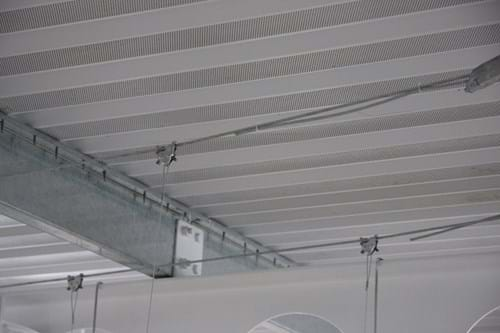
(Gripple C-Clip catenary solution used in construction suspension)
Once we had identified OLE systems as a potential area for innovation – it became clear there was issues with install speeds, lack of adjustability in many components and high margin for error. We could physically see issues ourselves when attending site and were made aware that Network Rail was looking for help to address these. We therefore started to investigate in more depth.
We then approached the University of Sheffield, as it is part of UKRIIN (UK Rail Innovation Network) to find out more about the rail industry’s challenges with electrification. From this work and our other research, we confirmed that installing rail droppers was one of the most time-consuming aspects of a rail project and a key reason that the electrification rollout had been slower than expected."
How did you and the Gripple team come up with a Rail Dropper concept?
"The concept stage is one of the most exciting parts of the new product development journey.
Nine of our design engineers initially got to together in our 'Juicer' (our innovation discussion room) where we held a multiple day brainstorming workshop, resulting in 20 concept ideas and drawings. At this stage, we operate with a ‘no idea is a bad idea’ policy to make sure that we are always encouraging a ‘think outside of the box’ attitude!
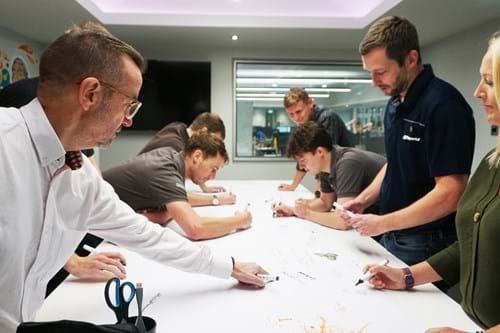
(Design engineers working on rail dropper concepts in the Juicer at the Gripple Innovation Centre)
Over time, these early concept ideas were carried forward and presented to a group of industry experts which consisted of Network Rail employees, their contractors and consultants. This allowed us to design a product which was tailor made to fit the market’s needs. The meetings allowed us to narrow the concepts down to a carefully selected three, which were to be carried forward and developed further.
Whilst development was continuing, we organised regular meetings with rail industry stakeholders so we could steer the project in the right direction based on their requirements. Using our in-house 3D printers, we were able to quickly incorporate their feedback into the development and allow them to get ‘hands-on’ with 3D printed prototypes of the product at regular updates as the design progressed.
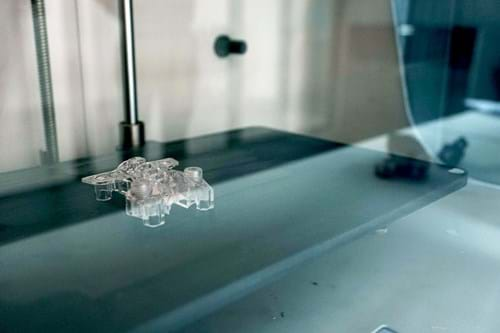
(Volt Lock housing prototype 3D printed at our Don Road Innovation Centre in Sheffield)
As further development took place and we sought feedback from rail engineers and contractors in the market. Finally once we were happy with a final concept we reached the ‘concept freeze’ stage of the project. Our chosen concept would then move forward into the detailed design stage, allowing us to work alongside Network Rail to ‘fine tune’ the product. This would ensure the product was as beneficial as possible to the customer and as efficient as possible from a manufacturing perspective.
A great example of a design challenge we needed to overcome was the contact clamp. Currently installers can experience problems with the contact clamp not being set to the correct torque as it must be installed and set manually using hand tools. Current solutions use a nut and bolt to provide a clamping force, which is susceptible to user error and can lead to having to re-install. Our design engineers developed our Gripple auto-torque contact clamp to guarantee 'right first-time installation'. It uses a lever which provides a pre-set clamping force, meaning that the right torque is guaranteed during interaction with the contact wire every time!
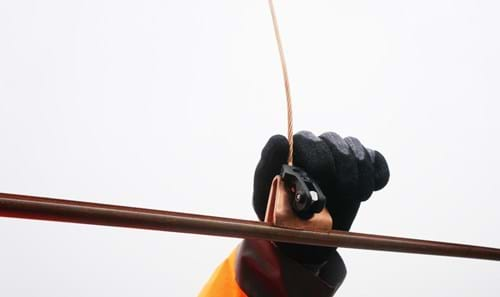
(Auto-torque contact clamp final design)
The concept for the top dropper came from our existing Gripple catenary technology, which is widely used in the construction sector as a method of suspending lighting. The system needed a complete re-design for use in rail OLE, but the technology remained the same and feedback from industry experts was extremely positive due to its combination of full adjustability and complete reliability.
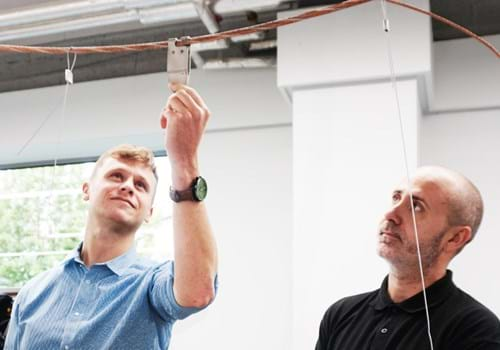
(Harvey Hancock, Rail Product Manger testing an early concept)
One of the main challenges which we faced was to improve the speed of installations whilst still creating a fully conductive product. Our design engineers worked tirelessly at the concept stage to eventually develop our Volt Lock technology, which is housed within the catenary wire top dropper and includes a roller which both grips the dropper wire and ensures constant contact with the copper housing of the product. This makes the product fully conductive."
What input/feedback did you receive from rail contractors and industry experts during the product development process and how did it help refine the final product?
"We have developed strong relationships with Network Rail and some key contractors in the OLE industry, who have all been extremely receptive and provided vital feedback during the product development process.
We hosted numerous workshops with Network Rail, where they made in-depth analysis of our prototypes and suggested improvements, after which we returned them back to our Innovation Centre to implement the changes. This formed a closed cycle of feedback to ensure that the product could be developed quickly and effectively. Each time, our product engineers refined the product to ensure it fitted perfectly with the customer’s requirements."
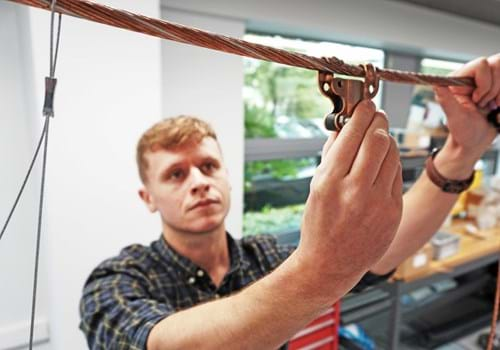
(Harvey Hancock, Rail Product Manger testing a refined catenary fixing concept)
Click here to read our next interview with John Butterworth which looks at the process of taking our innovative Rail Dropper from concept to production, to solving a major issue in the rail industry.
We are excited to confirm that our SwiftLine Rail Dropper has now received Network Rail Product Approval and is available in the UK. Discover more online here.
Why use Gripple?
- Innovative, patented solutions designed by an in-house team of engineers
- Considerable reductions in packaging, vehicle movements & embodied CO2
- A range of support services at every stage of your project, provided by our technical team
- Complete, off-site solutions which minimise health and safety concerns
- Significant time and cost savings on your project